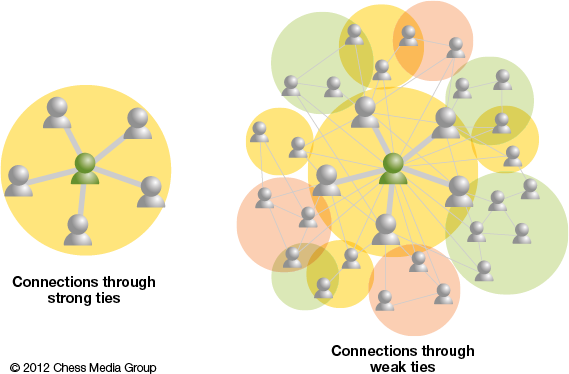Change Selection
01
Please choose a question

THE STRENGTH OF WEAK TIES
Mark Granovetter
While researching the ways in which people found work, Granovetter realised
that people were actually finding work as a result of their weak ties, rather than
their strong ones. This became the basis of The Strength Of Weak Ties.
Strong Ties: These are the close relationships that we have within our social
networks. The people in the social network tend to know each other. We have
several of these social networks and they each overlap. This means that in terms
of range of connection they are limiting.
Weak Ties: These are just connections. People we don’t connect with in social
circles. We have lots of them, but we don’t typically share the same social circles.
This means that they can act as bridges into new groups and new areas.
Weak ties therefore better connect us to a wider range of social circles,
information and possibility.

This short animation from Dalton Conley explores why it is the people with whom we are the least connected who offer us the most opportunities. Courtesy of Norton Sociology
